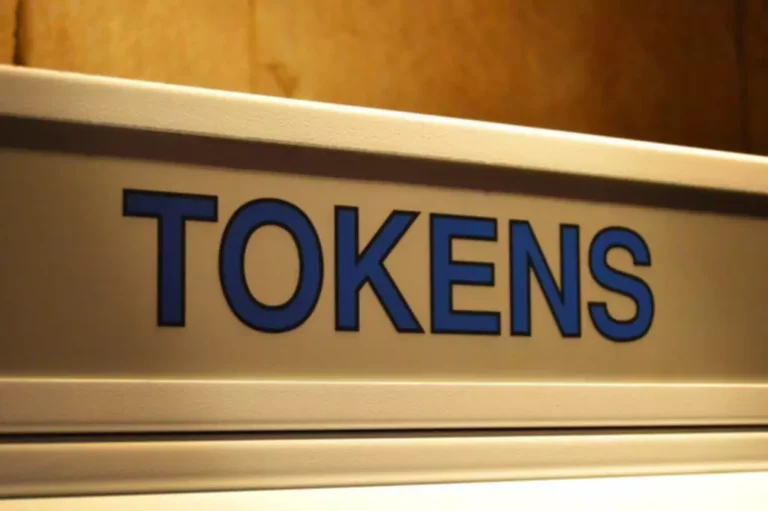What Is Regenerative Finance ReFi?
Content
For users of these new systems, it’s key to be cautious and aware and to do your due diligence before using a ReFi (or any Web3) service. Be thorough when evaluating new projects, and don’t put money into anything you don’t understand. The exchange of value within communities and economies is fundamental to how our world operates. Digital tools like blockchains are giving us advanced ways to design and reprogram value exchange mechanisms and money flows, and let us include what we value in our financial systems. Anyone can add new smart contracts to an open blockchain like https://www.xcritical.com/ Ethereum, and these new smart contracts can freely interact with everything that’s already there. Developers can create applications and services that expand on existing ones, which unlocks unbridled innovation, and ultimately benefits the entire ecosystem.
The Potential Risks of Regenerative Finance
Applications on a blockchain could be poorly designed or malicious — after all, access is open regenerative finance blockchain so anyone can create a decentralized application. Not many regulations are in place yet, so users of DeFi products need to carefully evaluate which services are safe to use and trustworthy. Decentralized lending platforms can be compared to bank accounts with a peer-to-peer lending function. They allow users to earn interest on their crypto holdings, or borrow crypto assets from others.
ReFi Case Study: Toucan Protocol
As Web3 continues to evolve, we expect to see more innovative and impactful projects emerge, to bring the benefits of blockchain technology to the real Know your customer (KYC) world. Regenerative finance is generally an automated platform governed by smart contracts. Loans are handled instantaneously and the crypto will be deposited into a user’s digital wallet when a loan is confirmed. Regenerative finance is ultimately designed to create a more balanced, nondestructive economy that incentivizes social and environmental good. Regenerative finance (ReFi) is a term used to describe blockchain projects that are developed such that the resources used over time are regenerated. The integration of Pili’s bio indigo is cost-neutral in terms of the dyeing process, fitting seamlessly into existing dye systems and minimizing cost impacts on the final product.
What are the key traits of ReFi systems?
ReFi’s mission is therefore to systematize incentives to make regenerative places feasible. Addressing current crises profoundly means designing alternatives to our domination culture systems with regenerative ones that value caring and nature. Both movements prioritize decentralization, sustainability, and community empowerment. It envisions a decentralized internet where users share power rather than having centralized authorities. Governments and supranational organisations can adopt Web3 technologies to digitise the treasures of world heritage to preserve them when under threat from warfare or environmental decay. Alongside this, specific ReFi initiatives are working to ‘bank the unbanked’, offering financial independence that has been traditionally unavailable to many.
How ReFi Is Leveraging Decentralized Blockchain Technology
UBI can function as a safety net for people, and it is supposed to ensure that everyone has a basic standard of living and can cover basic needs. Projects like Proof of Humanity, Circles and GoodDollar offer an unconditional UBI payment to all members trusted by other members of their respective communities. Digital technologies, and especially Web3 tools, show a lot of promise to help provide UBI to people around the world. Women and people from developing countries often hesitated or were not able to access education that provides the technical skillset to participate in this new industry. They might also be more hesitant to take big career risks, or prefer to focus on working for established tech companies rather than experimental startups.
They inject new vitality into sustainable development while actively promoting the construction of a healthier and fairer environmental Web3. One that seeks not just to minimise harm, but actively contribute to the health of our ecosystems and society with innovative financial mechanisms being a core driving force. Historically, these models have prioritised the extraction of natural resources for financial gain, often disregarding social and environmental consequences which are approaching critical tipping points. By contrast, ReFi practitioners, or “Regens”, aspire to establish non-extractive economic systems which instead place value on living systems, biodiversity, resilience, and holistic capital.
- “Circular economy not only is good for us, but is also financially very strong to generate competitive advantage.
- Historically, community decisions are often in the hands of a select few, lacking broad-based community engagement.
- Be thorough when evaluating new projects, and don’t put money into anything you don’t understand.
- Regenerative Economics theory recognises that rather than trying to completely overthrow the entrenched capitalist system, it is better to try and evolve it to the next stage before it’s too late.
- Do your own research before investing in any crypto platform and only invest the amount you can afford to lose.
By basing their activities on crypto projects, ReFi companies can generate capital that can be directed towards environmentally and socially sustainable investments, also ensuring that the profits are put to better use. So, regenerative finance seamlessly fuses the principles of regenerative economics with the innovation of decentralized finance. This visionary financial ecosystem represents a paradigm shift, aspiring to make financial services and products accessible to all. Regenerative finance in crypto can empower local communities through decentralized financial solutions. This involves shifting financial decision-making and resources closer to the communities that are directly affected by them. Local community banks, credit unions, and microfinance institutions adhering to regenerative finance principles may emerge as key players in providing financial services to underserved populations.
Ecovative Design helps the circular economy by developing materials that can substitute for environmentally hazardous alternatives, hence minimizing the environmental impact of numerous businesses. The construction and trading of decentralized green bonds is made easier by web3 technology. These bonds originate in blockchain systems and give a clear and effective way to finance environmental projects. Investors can support these projects and benefit while knowing their money is being utilized to build a more sustainable economy.
Early uses of ReFi include designing novel ways to fund public goods (like open source software) and tokenizing environmental assets (like carbon credits) so they could be used in DeFi applications (like DEXes). Web3 applications span a wide range of areas, from democratic digital governance systems to decentralized applications (dApps) for financial and other services. There are digital public goods, such as currency exchanges that aren’t owned or controlled by a company, and even a variety of metaverses and digital games where you can seamlessly move your assets from one virtual world to the other.
The good news is that rather than throwing the baby out with the bathwater, capital can be used as a dynamic and purpose-driven tool that improves social and ecological systems. By its very nature, regenerative finance (ReFi) can shift society from being degenerative, skip over being sustainable at unsustainable levels, and jump straight into being regenerative. Platform users can use nodes that run only on renewable energy for their transactions. It is the first blockchain to have a way for everyone to agree on how to deal with whales. PoS2 offers more security, better financial stability, and freedom from centralized control.
By leveraging blockchain technology, it’s possible to create a decentralized carbon credit market, providing increased transparency and reduced susceptibility to fraud. It breaks down the investment into transferable tokens, each representing a stake in the bond. When an investor purchases tokens from a solar energy company’s bond issuance, they’re directly supporting renewable energy initiatives, and in turn, receive a proportional claim on the bond’s returns.

However, just because a crypto project labels itself “regenerative,” it doesn’t mean it’s a good investment. As with any crypto project, you should research the team, road map, and reputation before allocating any funds to it. Traditional methods of recording history or inventorying artifacts are subject to change, but the blockchain locks these records in place.

Since the concern started to rise, a number of PoW chains adopted the more energy-efficient proof-of-stake (PoS) consensus. In 2022, Ethereum (ETH), the second-largest blockchain by market capitalization, switched from PoW to PoS. Most modern crypto projects are focused on reducing their carbon emissions and have introduced community-led initiatives to fight climate change. Canada-based CarbonX is a peer-to-peer trading platform for carbon that is built on blockchain.
Topl is an environmental, social, and governance (ESG) company based in the US focused on impact and helps corporations track, tokenize, and trade positive impact. The company helps value chains change digitally and sustainably, making it possible to make money from the verified impact on the Topl Blockchain. Topl wants to support and grow an ecosystem of blockchain-powered apps that solve problems like reducing and capturing carbon emissions, giving people access to financial services, and making the supply chain more transparent.
Profits are more fairly distributed, and the value of living ecosystems is recognized and incorporated into economic calculations. Leading the path in biomaterials innovation, Ecovative Design has made significant contributions to regenerative finance. They use the power of mycelium, the mushroom’s root system, to generate sustainable alternatives to traditional materials. Their products are biodegradable and regenerative, including shipping supplies and building solutions.